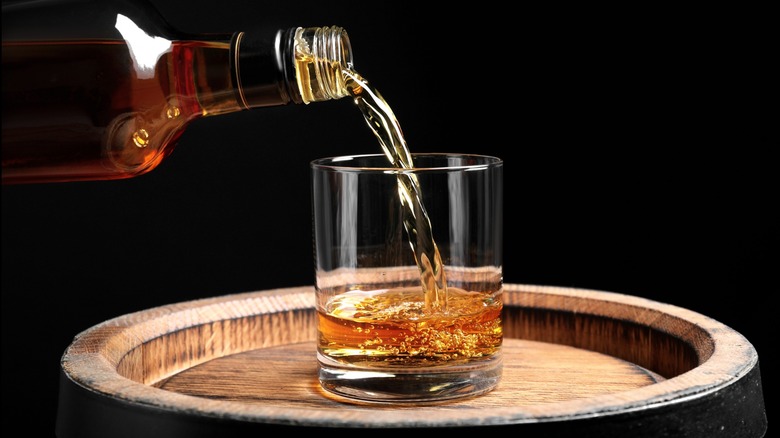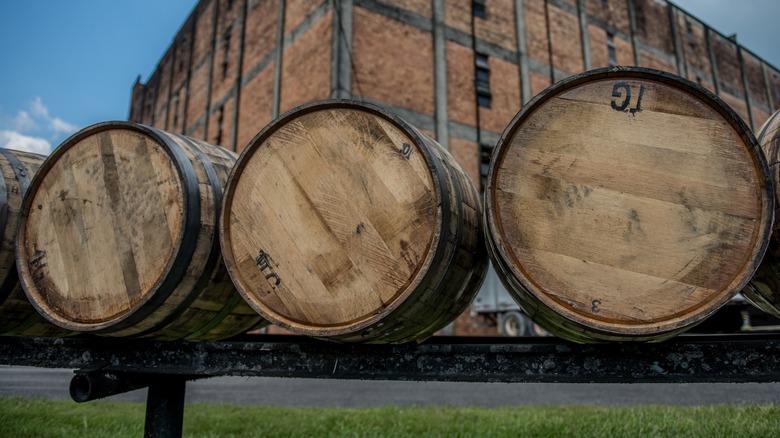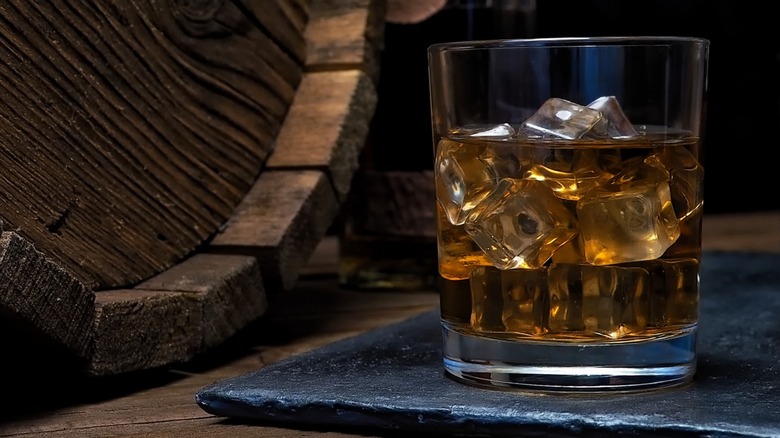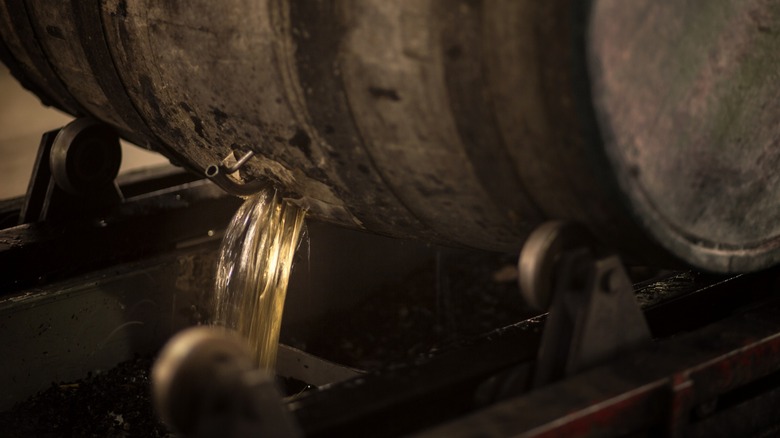The Difference Between Full Proof, Barrel Proof, And Cask Strength Bourbon
There's a lot to love about craft whiskey, but the jargon the industry uses to describe its products can get confusing fast. The language used to characterize a bottle's type of proof contains some of the most commonly encountered — and least understood — whiskey and bourbon terms. Today, we're going to be exploring the difference between full proof, barrel proof, and cask strength whiskey.
For those of you who don't know, the proof of a spirit is the strength of its alcohol content. Most people are familiar with the ABV (alcohol by volume) and it's the same concept. If a bottle of whiskey is 50% alcohol by volume, it is a 100 proof whiskey. If it's 60% alcohol, it's 120 proof. You take the ABV and double it to get the proof. It's that easy. Put simply, full proof is the whiskey's proof when it first enters the barrel, and both barrel proof and cask strength refer to its alcohol content when it exits the barrel after aging.
It's worth noting that none of these terms are legally regulated. Marketing teams can technically use them on whatever product they want in any way they see fit with no legal repercussions. But while the law may not come after them, the whiskey community absolutely would. Some terms mean more than others, as we'll see, but they all mean something specific. Just because the definitions aren't regulated doesn't mean whiskey makers aren't taking them seriously.
Full proof whiskey
To understand what full proof means, we need to know a little bit about how whiskey is aged. After fermentation, whiskey is a clear product called white dog. When the white dog is put into barrels, its proof is measured. The proof of the spirit before aging is called the entry proof. As the whiskey ages, its proof fluctuates depending on the local temperature, the humidity, and the length of time it spends in the barrel.
Speaking very generally, if the whiskey ages in a high-humidity climate, the proof will go down as it ages. If it ages in a low-humidity climate, the proof will rise as it ages. This has to do with how quickly the water and alcohol are evaporating in relation to each other. Let's say that a whiskey has an entry proof of 115. When it's done aging, that proof has risen to 125 (known as the exit proof).
To make it a full proof whiskey, the distiller will add water to the barrel until it reaches the entry proof of 115. The merit of a full proof whiskey is consistency. There's no guesswork involved with how much water to add based on subjective taste. You have the number and you add water until you reach it. When you're producing a lot of whiskey, this can be a real benefit both for the distillery and for the consumer.
Barrel proof whiskey
Barrel proof spirits are some of the most highly sought-after bourbons and whiskeys within the whiskey hunting scene. They capture depths of flavor that are unmatched by other varieties, even if they come with a bit of a bite. See, barrel proof whiskeys are the least adulterated. There's no water added, whatsoever. For barrel proof, it isn't the entry proof that matters but the exit proof.
Whiskey, particularly bourbon, can get up into the 130 to 140 proof range after it's been aged. By adding water and mixing different barrels from the same batch together, the distillery can round out any variation that occurred in the aging process and create a consistent flavor across the board. Barrel proof whiskey gets none of that treatment. You uncork the barrel and the proof that comes out is the proof that goes into the bottle.
Sometimes businesses or even individual people will go directly to a distillery and pick out a barrel that they like the flavor of. They'll buy the barrel at barrel proof and have it bottled just for them. If a liquor store does this, it's called a store pick. It's a fun way to get your hands on some of the best barrels a batch has to offer since you get to go try them before you pick one. Each barrel is going to have a wide variance in flavor and strength, even if they were fermented together and have aged the same amount of time.
Cask strength whiskey
Cask strength is something of a trick addition to this article since it means the exact same thing as barrel proof. A cask is just another name for the barrel that you age whiskey in. The proof of a whiskey is also the same thing as its strength. The words are interchangeable, although you wouldn't want to say "cask proof" as that isn't really a whiskey term.
Other ways you can phrase this same process are "barrel strength" or "straight from the barrel." If you see any of these on a bottle, they're referring to the process whereby the whiskey is taken out of the barrel and bottled without being diluted with water. Another thing to clarify is that not all cask strength whiskeys are single barrel whiskeys.
A single barrel whiskey has come from just one barrel and has not been mixed with other barrels. Cask strength or barrel proof whiskeys can be mixed with other barrels from the same batch, so long as they are still at the same proof as the exit proof, but they can't be diluted. It's fairly common to see a whiskey labeled as "single barrel cask strength" or "single barrel barrel proof," but it's possible to see one without the other.



